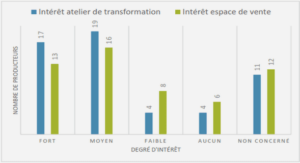Cours numerical modelling, tutoriel & guide de travaux pratiques en pdf.
Domain description
The domain represented by the numerical model corresponds to a two-dimensional projection of the conceptual groundwater flow model presented in Section 2.4 and corresponds to the geologic cross-Section presented in Section 2.1. The model follows an inferred regional flow path which extends from a local peak elevation in the Appalachian Highlands to the St. Lawrence River. In order to optimally capture the regional flow pattern, the modeled cross-Section is 69 km long with a maximum depth of 9.1 km. Three distinct geological provinces are included in the model: the Grenville crystalline bedrock, relatively flat-lying units of the sedimentary St. Lawrence Platform and the structurally complex and metamorphosed deep oceanic units of the Appalachians that are thrusted over the St. Lawrence Platform. The entire domain is covered by a discontinuous layer of surficial deposits of marine and glacial or fluvioglacial origins.
Steady-State Regional Flow Model
Assumptions and limitations
Several assumptions have been made in order to simplify the Chaudière-Appalaches model and reduce over-parameterization. First, given the regional scale of the study, fractured rock is represented as an equivalent porous medium. Also, using a two-dimensional model assumes that groundwater flow is perfectly aligned with the cross-Section and thus transverse hydraulic and age gradients are neglected. Since the cross-Section is parallel to regional topographic and piezometric gradients, it is considered well representative of the regional flow direction.
Furthermore, the flow system is simulated under steady-state conditions and thus does not account for seasonal (or climatic) variations of the recharge. Transient recharge is expected to have most impact on the local flow systems, with little or no significant impact on regional flow. Furthermore, water table fluctuations induced by seasonal recharge variations are also expected to be negligible with respect to inherent uncertainty, including the errors associated with the extrapolation of the regional potentiometric map, which is assumed to represent an annual average water level. Variations over geological time (ex. ice advances and retreats) are also neglected.
Moreover, the model assumes that groundwater in the domain has a uniform temperature, viscosity and density. The average thermal gradient in the area is between 15 and 20 oC/km (Grasby et al. 2011) which, based on an estimate of the Rayleigh number for average conditions found in the study area, is not sufficient for the onset of thermal convection (Hiscock and Bense 2014). Also, although measured TDS concentrations in the study area reach up to 16,785 mg/L (Bordeleau et al. 2017) and up to 340,000 mg/L in the deep formations of the St. Lawrence Platform (Ngoc et al. 2014), the effects of density and viscosity gradients on flow are assumed negligible relative to the logarithmic decrease with depth of the hydraulic conductivities (documented in Section 3.2.2.2).
Model Parameters
Domain Extent and Discretization
The estimated initial top boundary elevation of the model, representing the water table, was extracted from the regional potentiometric map (Lefebvre et al. 2015), while the elevations of the bedrock interface and the nine distinct surficial deposit layers were obtained from a detailed cross-Section of surficial deposits traced roughly along the modeled Section (Lefebvre et al. 2015). For modelling purposes, the rock formations within the cross- Section were divided into five different zones representing different rock types: the St.
Lawrence Platform, the Appalachian Highlands, the Utica Shale, the carbonate platform and the Grenville formation.
The finite element flow model is discretized using linear triangular elements with a horizontal discretization of 50 m and a vertical discretization between 0.1 and 50 m (increasing from top to bottom), for a total of 358,000 nodes and 797,640 elements.
Material Properties
Material properties represented by the model can be classified as surficial deposits, the fractured bedrock aquifer and deep units.
Surficial deposits
Surficial deposits along the cross-Section are composed of nine different hydrostratigraphic units (Lefebvre et al. 2015): organic deposits, alluvium, lakeshore delta sediments, glaciomarine delta deposits, coarse and fine-grained littoral glaciomarine deposits, fluvioglacial deposits, till and undifferentiated sand (Section 2.1). Each unit is represented by a layer of deformed elements in the model (Table 3). All layers of the surficial deposits were assumed to have an average porosity of 0.3.
Till is the most prominent unit over the study area and it is thus expected that its hydraulic conductivity will control groundwater flux reaching the fractured rock aquifer. The till unit also has the most heterogeneous composition; typically very sandy in the area of the cross- Section, its texture can vary abruptly from a permeable sand facies with a few pebbles to an essentially impermeable stony and clayey silt (G. Légaré Couture, personal communication 2013). Uncertainty with respect to the hydraulic conductivity of the till layer is addressed through calibration and sensitivity analysis.
Table 3 Physical description of the surficial deposits, including reported and calibrated hydraulic conductivities.
Fractured bedrock
Hydraulic conductivities of the bedrock were obtained through the updated PACESChaudière- Appalaches database (Lefebvre et al. 2015) in which the extensive public well drillers’ log data was used to estimate hydraulic conductivities (Figure 19). These data originate from specific capacity data while accounting for drilling and testing biases (M. Laurencelle, personal communication, June-July 2015; Lefebvre et al. 2015). Calculated hydraulic conductivities in the shallow bedrock (within the top 100 meters of the rock surface) are between 3.8×10-10 and 6.5×10-4 m/s in the St. Lawrence Platform (241 data points) and between 5.2×10-12 and 3.8×10-3 m/s in the Appalachian Highlands (4966 data points). Although the hydraulic conductivity of the bedrock is highly variable for a given depth, spanning more than 6 orders of magnitude, a clear trend of decreasing hydraulic conductivity with depth can be observed for both geologic provinces (Figure 19) (Lefebvre et al. 2015). The model hydraulic conductivities were calibrated by adjusting the parameters of an exponential decay function given by Equation 10: log[(𝐾(𝑧)] = 𝑙𝑜𝑔[𝐾𝑚𝑖𝑛] − (𝑙𝑜𝑔[𝐾𝑚𝑎𝑥] − 𝑙𝑜𝑔[𝐾𝑚𝑖𝑛])𝑒−𝛼𝑧 (10)
where :
z (m) is the depth below the top of the bedrock surface
K(z) is the hydraulic conductivity at depth z
Kmin is the minimum hydraulic conductivity asymptotically approached by the curve
Kmax is the maximum hydraulic conductivity, and α is a curve decay constant






